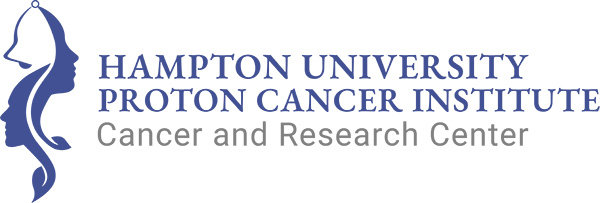Black Community Opinions
HU’s Proton Institute Changes Name
Hampton University’s renowned proton therapy facility shifts its focus with a name change to the Hampton University Proton Cancer Institute, reflecting a commitment to addressing cancer disparities in the Black community and providing innovative cancer care.
#HamptonUniversity #ProtonCancerInstitute #CancerDisparities #HealthEquity #CancerTreatment

By Rosaland Tyler
Associate Editors
New Journal and Guide
The Hampton University Proton Therapy Institute recently changed its name to the Hampton University Proton Cancer Institute, about three years after CDC reports showed Black men and women continue to have disproportionately high cancer rates.
This means the new Hampton University Proton Cancer Institute will continue to rank No. 8, as a proton therapy facility, and continue to provide cutting-edge treatment, compassionate care and innovative research. The newly renamed center also launched a March 18 marketing, advertising, and activities campaign, in an effort to explain its name change.
Hampton University President Darrell K. Williams said in a recent statement on the school’s website, “In this next chapter for our facility, we reaffirm our dedication to research, advocacy and access. The new name reflects our comprehensive focus on cancer care and research, emphasizing our commitment to innovation and excellence. This renewed focus presents incredible potential to improve patient outcomes, regardless of their zip code, and possibly reshape medical history.”
This is the point. Hampton’s recent name change and shift to research, advocacy, access, and innovation, occurred at a time when an increasing number of Blacks are receiving a cancer diagnosis. In fact the three leading causes of death among Blacks are heart disease, cancer, and COVID 19, according to the CDC. Blacks have the highest death rate and shortest survival of any racial/ethnic group in the United States, according to the American Cancer Society. The prostate cancer death rate among Black men was nearly five times higher than among Asian or Pacific Islander men. The breast cancer death rate among Black women was nearly 2.5 times higher than among Asian or Pacific Islander women, according to the CDC.
Black females are more likely to be diagnosed with breast, lung, and colorectal cancer or make up more than half of all of these types of new cancer cases, according to a 2020 CDC report.
Meanwhile, Black males are more likely to make up a little less than a third of those diagnosed with prostate cancer, and a quarter of all new kidney, liver, pancreas, oral cavity, non Hodgkin lymphomas and myeloma cancers, according to the 2020 CDC report.
“Among African-American females, uterine cancer incidence rates went up from 2007 to 2016, while lung and colorectal cancer incidence rates went down, and breast cancer incidence rates stayed about the same,” the CDC noted in its February 2020 report.
“Among African-American males, incidence rates of prostate, lung, and colorectal cancer went down from 2007 to 2016, but kidney cancer incidence rates went up, according to the 2020 CDC report. “Changes in incidence rates could be due in part to changes in risk factors or changes in screening test use.”
The good news is Hampton’s recent name change and shift in focus underscores the type of life-saving treatment that Javona Braxton, a 46-year-old Black female, received after she was diagnosed with colon cancer at Bon Secours in 2023.
“I don’t think anyone in their mid-40s expects to find something that’s going to alter their life going forward,” Braxton’s physician, Dr. Micheael White told the Richmond Times-Dispatch in a March 28, 2024 interview.
“Cancer care here is not a unilateral decision made by one person,” Dr. White said. “It’s a group decision based upon multiple disciplines of cancer treatment, as well as discussions with the patient.”
Surgery was recommended as the first line of treatment for Braxton, who was diagnosed on May 18, 2023, and underwent laparoscopic surgery, a minimally invasive approach, using small incisions, that generally heal faster and easier than traditional surgical incisions.
Surgery also confirmed that her lymph nodes had not been affected and the cancer hadn’t spread.
“Thankfully, her pathology showed it was a stage 1 tumor, and she didn’t need any additional therapy,” Dr. White told the Richmond Times-Dispatch.
“So far, there’s no sign of any recurrence,” said Dr. White. “I just saw her recently and she’s doing very well.”
This type of outcome is similar to what the newly renamed Hampton University Proton Cancer Institute has accomplished since it opened its doors about 14 years ago.
Tiffany Rodgers, director of marketing at Hampton Proton, said in a recent statement on the school’s website, “We have solid values and enjoy tremendous goodwill within our region. We aim to build on that relationship to further energize and inspire healthcare as we move into the future. The new name and logo represent an exciting evolution of the brand, evoking an emotional connection to the work and the people we serve, and acting as a powerful symbol of the foundational pillars of our institute.”
Hampton University’s newly renamed cancer treatment center is an independent, free-standing facility billed as the largest of its kind in the world. It treated its first patient for prostate cancer in September 2010, according to news reports. Since then, it has averaged about 250 patients a year, little more than one-tenth of initial projections, which stood at projected treatment of 2,000 patients annually at the outset.
By September 2015, its fifth anniversary, it had treated a total of 1,274.
Proton therapy is a highly targeted form of radiation that is used to treat a variety of cancers, including head and neck, brain, lung, breast and gastrointestinal , as well as prostate. It delivers high doses of radiation even when tumors are close to sensitive organs, while sparing surrounding healthy tissue.
Because it lacks the leverage of a large health system, it faces a greater struggle to obtain insurance coverage for patients – a problem for all proton centers because of the high costs.














